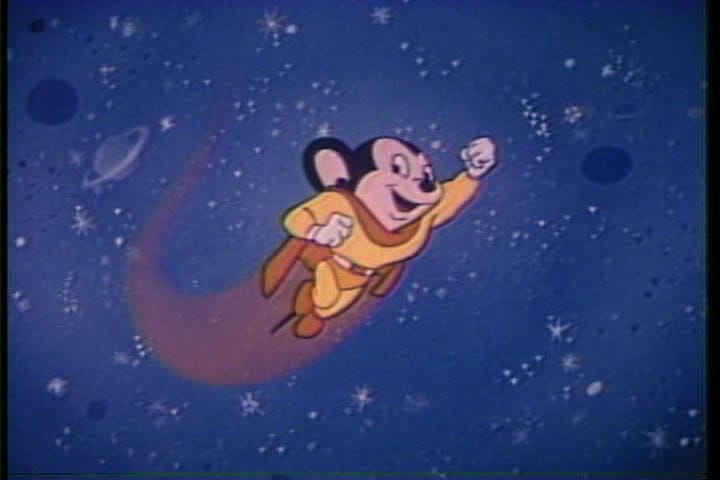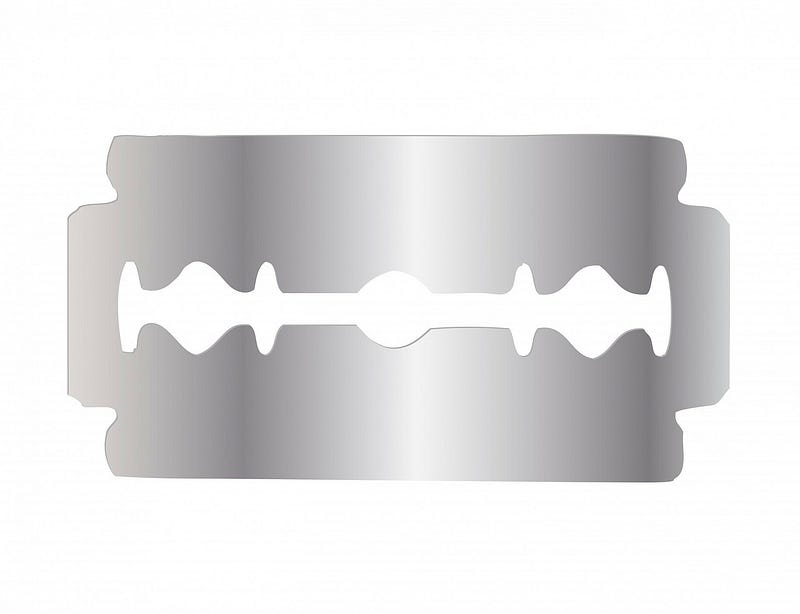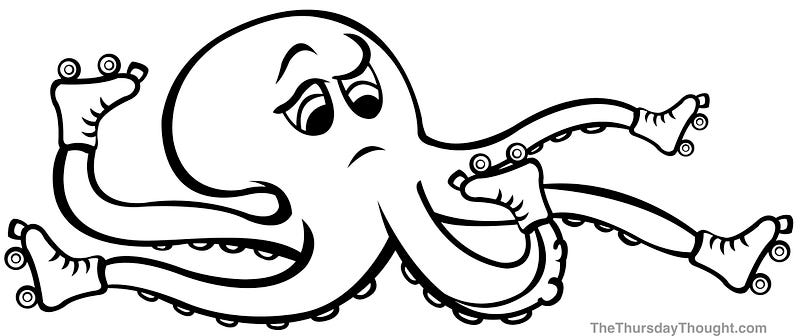
In Japan (and other regions), an ancient variant of fish trap is used to catch octopuses.
Fishermen leave Octopus traps on the sea bed for days. In time, Octopuses enter these pots out of curiosity or for shelter, no bait is required. When the fishermen bring the pots back to the surface, the octopus do not try to escape, they stay put in their pot.
In 1999, Sony was in pole position to own the digital music market. Ultimately, Sony failed and Apple won.
Sony failed despite its monopoly and huge head start with the walkman and its numerous digital music players. Bear in mind the end-to-end product development opportunity that Sony had. Not only did they manufacture devices, but they owned a music label, had a powerful brand and indeed movie content.
A huge crash hit Sony in 2000 and once they felt the bottom-line pain, they decided to act. In 2005, Sony recruited British executive Sir Howard Stringer as their first non-Japanese CEO.
His challenge was mammoth.

Too Many Octopus Pots!
In his opening speech to staff, Stringer said: “Sony is a company with too many silos!”
The term “Silo” was unfamiliar to the Japanese audience. This is because Japan grows rice and not grain (which is housed in silos) so the term silo is not well known in Japan.
Scrambling for a synonym, the translator thought fast and settled on “Octopus Pots”.
Stringer discovered that the teams were all competing with each other and internal rivalry was stronger than rivalry with competitors. As a result hundreds of Sony products were incompatible.
Stringer organised a side-by-side display of Sony gadgets in order to shame his employees and show how ludicrous this was. They responded instead with pride in their own creativity.
Incredibly, at the Computer Dealers’ Exhibition (Comdex), which was the largest computer trade shows in the world, Sony launched two digital music devices.
This was not because the company had over innovated or held an internal hackathon and created two competing products. Rather it was due to deep divides at play within Sony. While they should have been working together, the different silos had created the two separate devices.
Neither had shared knowledge with the other. Neither worked together. Neither saw themselves on the same team.
Of course there were many other reasons for the stock decline beyond the vertical silos. While it may have been seen as advantageous, Sonys existence as both the content owner and device-maker may have been counterproductive. For example, due to fear of music piracy Sony was reluctant to make a music player capable of playing the MP3 file format.
Meanwhile, Apple obsessed about customer needs, an extreme, attention-to-detail driven focus on design. Apart from the sheer brilliance of Steve Jobs, Apple focussed on building an eco-system and end-to-end development.
Apple Eco-System and End-to-End Development
If you are an Apple household think of all your Apple products. Jobs’ vision was to have the Mac as the brain for the household or the mothership, with a TV, iPad, iPhone and software and Siri acting as pods, controlled by the mothership.
For any large company to operate at the scale of Apple it is a case of managing different “octopus pots” of the business.
The Apple advantage was that everything was driven by customer experience. To this end Jobs was like the orchestra conductor ensuring every unit was playing in harmony.
When such a range of products are produced to be compatible and with the same end in mind it is always the customer who wins. This is one of my favourite Jobs quotes and it was in response to an insult:
“You’ve gotta start with the customer experience and work backwards to the technology, you can’t start with the technology and try to figure out where you’re gonna try to sell it.” — Steve Jobs
Jobs was involved in the prototyping stage, the advertising and pr messaging stage, the presenting at the World Widewide Developers Conferences, the Apple store design, the unboxing of the product.
The Early Bird Catches the Worm, the Second Mouse Gets the Cheese

Apple benefitted from a late mover advantage in the MP3 player race.
Winamp was one of the popular mp3 software players at the time. Sony and others had a head-start with the hardware.
Meanwhile, Jobs and co. were building an end-to-end eco-system. Apple realised the player was only part of the equation and on it’s own it would always be in competition. Easy-to-use compatible software, coupled with the foundation for a digital music marketplace (iTunes Store) and of course a slick easy to use device in the iPod, (which was also a fashion statement) was a huge win for Apple.
Reverse Razor and Blades Model

A Razor and Blade Business Model is also known as a “tied products model”. The model is basically involves selling two or more dependent products or elements of a product at different prices. One is sold at a discount or even a loss, while the second dependent good is sold at a considerably higher price.
The model was named after King Gillette (His innovation was the thin, inexpensive, disposable blade of stamped steel as in the picture above). Gillette sold/sells razors at a low price and makes profit from the blades. Think Nespresso coffee machines, think playstation consoles and then games, think iTunes and iPods/iPhones/Macs.
A reverse Razor and Blades model is when you make very little on the consumable (blades or coffee pods) and you make your money on the hardware (razor or coffee machine). Apple makes little (in comparison) from the iTunes store, although this has turned into a heathy marketplace.
The real win is enticing users into the Apple eco-system, it is easier to have all Apple products, which work seamlessly together than have disjointed incompatible “wired” products requiring adaptors. Apple made iTunes available on PC computers also, this worked as a recruitment method to attract people to Apple devices.
When Apple launched the iPod it was only compatible for Mac users, despite this the iPod was the fastest selling mp3 player to ever hit the market. This meant people started looking at Apple products and the apple eco-system.
An Octopus on Roller Skates and WaterCoolers

The thing I always admired about Apple is that they had a clear vision, a clear North Star that everyone could work towards. A company without this vision or purpose is like an Octopus on Roller Skates, there is a lot of movement, but little direction.
In Apple, they worked cross-departments, products were compatible and thus so were departments within Apple (high security aside).
When Jobs bought Pixar it was silo’ed into creative and technology. He had the building restructured to ensure that the canteen was in the middle and the tech team and creative team mixed. This created a water cooler effect, where people could bump into each other.
An effective way of extending or deepening the water cooler effect is to create a watering hole within an organisation.
Watering Holes

Sony was silo’ed. Many large organisations are silo’ed. This is not good for business in today’s world of rapid change and disruption, but there are some initial, easy steps businesses can take.
In nature, there a exceptional rules around the watering hole. At the watering hole the Lion can drink peacefully beside the Gazelle, the gloves are off.
However, outside the watering hole it is back to nature and everyone is fair game (literally).
Businesses can create innovation spaces/labs/collaboration hubs to facilitate this behaviour and draw teams out from their silos. In these watering holes you can hold design thinking workshops, invite outside speakers in to talk to staff (from across the organisation, not just one silo). If space is at a premium, then create a nerd club or hold some brown bag lunch talks. (One piece of advice is not to make these spaces too flamboyant as this may have an adverse effect and attract envy across the organisation.)
A watering hole can have a dramatic effect and initiate lasting change over time. For this change to happen there needs to be a core team that collaborate and drive change across the organisation.
This team are what I call positive vampires. They infect the rest of the organisation for the better.
This team need senior management CEO level blessing, the C-suite can easily block this team and will, because this team questions the status-quo. This team need to have vulnerability (like we discussed about Pac-Man here).
Their job is to instil a new collaborative mindset. Their job is to initiate change. This team must respect the past and where people have come from, while introducing them to the future, in fact to several futures.
This team need to be part of a team that is like Netflix within Blockbuster. There needs to be a clear vision for the organisation (to avoid the octopus on roller-skates syndrome) and this team use that as there North Star and they break a lot of rules and ignore a lot of red tape to make lasting change.
Thank you for reading.
If you liked this post, please hit the heart button so others will see it.
You may also like The Innovation Show.
On Saturday August 27th we talk to Ollie Hynes, CEO and Founder of The Hub Controller, a next-generation smart thermostat that is not only smart enough to control your heat, but also your heating bill.
We also talk to Sarah Martin, CEO and Founder of CrevaClub, a fascinating product, with huge potential for profit and indeed to solve the problem of counterfeit baby food in China.
Finally, Daniel Maher, CEO and founder of Equinox Digital tells us about his startup a mix of Virtual Reality and Archaeology.